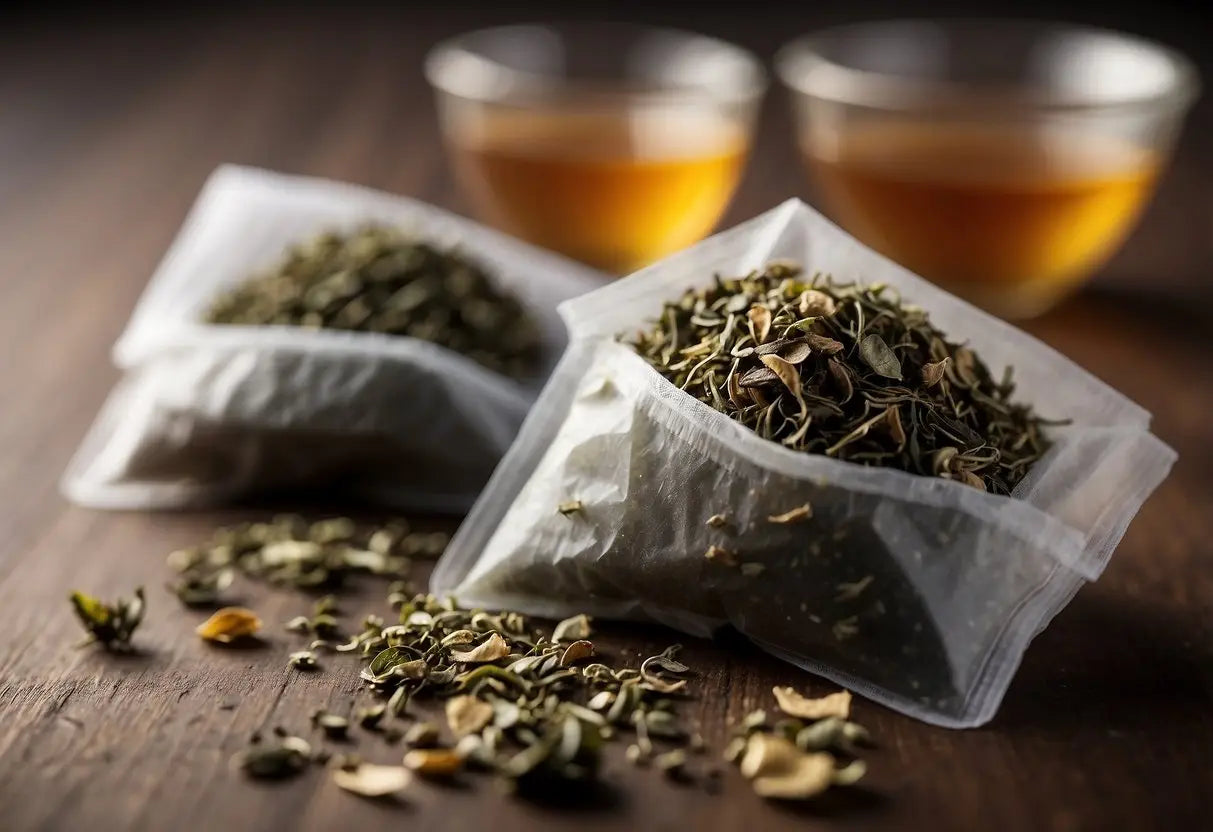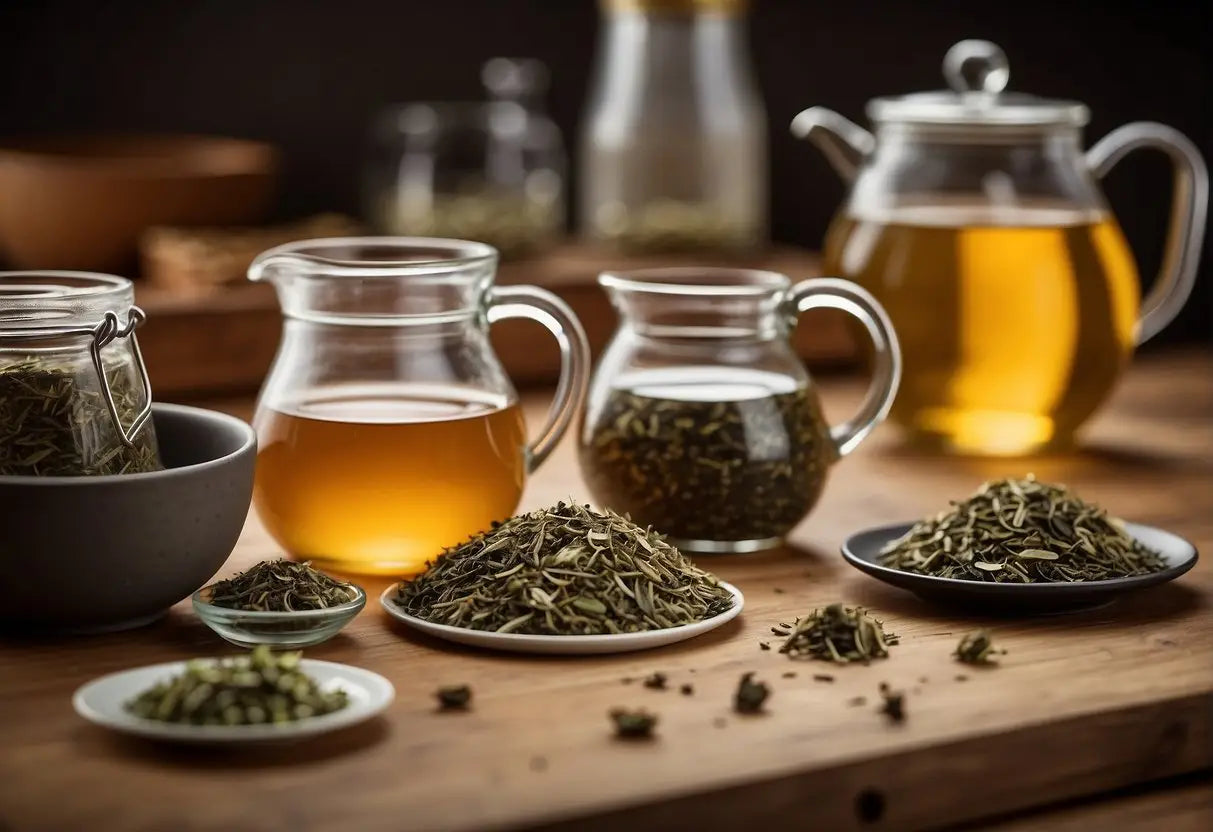Do Tea Bags Go Bad
Tea bags are designed to hold tea leaves and facilitate easy brewing. They contain porous materials that allow water to flow through while retaining the tea leaves inside.
- Paper: Commonly used due to its affordability and biodegradable nature.
- Silk: Offers a luxurious feel but is less common due to cost.
- Nylon: Used for durability, though not environmentally friendly.
The type of tea leaf used impacts the flavor. Whole leaves, broken leaves, and fannings provide different brewing experiences.
Bestsellers
Tea Bag Contents:
- Herbal Blends: Often include flowers, herbs, and spices.
- Green Tea: Generally lighter and more delicate.
- Black Tea: Stronger, with a more robust flavor profile.
Preservatives are rarely used because tea is naturally dry, which inhibits bacterial growth.
Storage: Keep tea bags in a cool, dry place to maintain freshness. Airtight containers can help prevent moisture and contamination.
Shelf Life of Tea Bags
Tea bags typically have a shelf life of 1 to 2 years when stored properly.
Storage conditions, such as keeping them in a cool, dry place, are critical for maintaining their quality.
Factors Affecting Shelf Life
- Packaging Type: Foil-wrapped tea bags stay fresher longer than paper-wrapped ones.
- Storage Environment: Humidity and high temperatures can degrade tea faster.
- Type of Tea: Green and white teas usually have a shorter shelf life compared to black or oolong teas.
Signs of Expired Tea Bags
- Stale Smell: A musty or flat aroma indicates that the tea has expired.
- Poor Flavor: If the tea tastes weak or off, it’s likely past its prime.
- Discoloration: Tea bags that have changed color may have degraded.
Tips for Prolonging Shelf Life
- Airtight Containers: Use airtight containers to protect tea bags from moisture and air.
- Cool Storage: Keep tea bags in a pantry or cupboard away from direct sunlight.
- Separate Storage: Store away from strong odors and spices to prevent flavor contamination.
By following these guidelines, you can ensure your tea bags remain fresh and flavorful for as long as possible.
Factors Affecting Tea Bag Quality

Several elements influence the quality of tea bags over time.
Exposure to Air: Tea leaves can absorb moisture and odors from the air. Always store tea bags in an airtight container to maintain freshness.
Light: Direct sunlight can degrade the quality of tea. Keep tea bags in a dark place to avoid exposure to light.
Temperature: High temperatures can cause tea to lose its flavor. Store tea bags in a cool, dry place.
Humidity: Humid environments can lead to mold growth on tea bags. Ensure your storage area is dry.
Lao Ban Zhang
Packaging: Quality packaging helps protect tea bags from external factors. Choose tea brands that use proper, secure packaging.
Age: Tea bags can go stale over time. Check the expiration or best-by date on the packaging and use old ones first.
Type of Tea: Different types of tea (green, black, herbal) have various shelf lives. Green tea generally has a shorter shelf life compared to black tea.
Storage Containers: Use containers made of glass or metal with tight seals to prevent air and moisture.
Here's a quick reference table:
| Factor | Effect on Tea Bags |
|---|---|
| Exposure to Air | Absorbs moisture and odors |
| Light | Degrades quality |
| Temperature | Loss of flavor |
| Humidity | Mold growth |
| Packaging | Protects from external factors |
| Age | Can go stale |
| Type of Tea | Varies shelf life |
| Storage Containers | Prevents air and moisture exposure |
Pay attention to these factors to ensure you get the best out of your tea bags.
Proper Storage Practices for Tea Bags
To maintain the quality of your tea bags, store them in a cool, dry place. Moisture and heat can degrade the flavor and quality of the tea over time.
Use airtight containers. This helps keep out oxygen and moisture, which can lead to mold and staleness. Glass jars, metal tins, or plastic containers with tight lids work well.
Keep tea bags away from strong odors. Tea easily absorbs other smells, which can ruin its natural taste. Ensure that your storage area is odor-free.
Avoid direct sunlight. Ultraviolet rays can affect the tea's flavor and quality. A dark cupboard or pantry shelf is ideal.
For long-term storage, consider vacuum-sealing your tea bags. This can significantly extend their shelf life by preventing exposure to air and moisture.
Separate your tea varieties. If you store different types of tea together, their flavors can mix. Use separate containers for black, green, herbal, and other teas.
Label your containers. Make note of the type of tea and the date of purchase. This helps you track the freshness and ensures you use older tea first.
By following these simple storage practices, you can keep your tea bags fresh and flavorful for a longer period.
Signs of Deterioration in Tea Bags

Tea bags, like various other food items, show clear signs of degradation as time passes.
Pay attention to any changes in color. Tea leaves should maintain their natural hue. If you notice a faded or bleached appearance, it's a sign they might be past their prime.
Aroma shifts can also indicate deterioration. Fresh tea bags have a distinct, potent smell. If this scent becomes dull or musty, the tea's quality has likely diminished.
Examine the tea bag material. Damaged or torn bags can compromise the tea's freshness and flavor. Ensure the bags remain intact and sealed properly.
Flavor is another critical indicator. Brew your tea and taste it. If the flavor feels dull or stale, the tea bags could be too old.
Moisture is a sure enemy of tea. Any dampness or stickiness should raise concerns about mold growth and safety.
Finally, check for any visible mold or pests. This is a clear sign the tea bags are no longer safe for consumption.
Being aware of these signs helps in ensuring you always enjoy a fresh cup of tea.
Health and Safety Considerations

Tea bags can degrade over time, potentially leading to issues that impact your health or safety. While tea itself doesn't typically go bad in the same way perishable foods do, it's important to store it properly.
Mold and Contamination
If tea bags are exposed to moisture, they can develop mold. Moldy tea bags should be discarded immediately, as consuming mold can cause health issues.
Chemical Leaching
Tea bags made of certain materials, especially older ones, may shed microplastics or other chemicals into your tea. Opt for brands that use natural, biodegradable materials to avoid this risk.
Flavor and Nutrient Loss
Tea bags stored in less-than-ideal conditions may lose flavor and nutrients. While not a direct health threat, stale tea doesn't offer the same enjoyment or benefits.
Allergies
Some people may have allergies to certain ingredients or materials in flavored teas or tea bags, such as artificial flavors or herbicides.
Storage Tips for Safety
- Keep tea bags in a cool, dry place.
- Use airtight containers.
Poor storage conditions can lead to a decline in tea quality, affecting both flavor and health benefits. Make sure to check expiration dates and be mindful of the storage conditions to ensure your tea remains a safe and enjoyable beverage.
Maximizing Freshness and Flavor Preservation
To maintain the freshness of your tea bags, store them in an airtight container. Exposure to air can degrade their quality.
Keep them away from moisture. Storing tea bags in a dry, cool place helps prevent spoilage.
Avoid direct sunlight. Sunlight can affect the tea's flavor and quality.
Refrigeration is not recommended. Tea absorbs odors, which can alter the taste.
Use tea bags within 6 to 12 months for optimal flavor. The taste may diminish over time, even if they are stored properly.
Label your containers with purchase or expiration dates. This ensures you use the oldest tea first.
Consider using a vacuum-sealed bag for longer-term storage. This method can help retain freshness and flavor.
These steps ensure that your tea stays fresh, vibrant, and enjoyable for as long as possible.
Tea Bag Longevity Compared to Loose Leaf Tea

Tea bags and loose leaf tea have different storage needs and shelf lives.
Tea Bags
- Often come in individual, airtight packages.
- Can last 1-2 years if stored in a cool, dry place.
- Paper tea bags might degrade faster than plastic or silk ones.
- Requires airtight containers for best preservation.
- Typically has a shelf life of 2-3 years.
- More exposed to air, affecting freshness over time.
Here’s a quick comparison:
| Factor | Tea Bags | Loose Leaf Tea |
|---|---|---|
| Shelf Life | 1-2 years | 2-3 years |
| Packaging | Often airtight | Requires airtight |
| Storage Needs | Cool, dry place | Cool, dark place |
| Exposure to Air | Limited | Higher |
Both tea bags and loose leaf tea should be kept away from moisture and strong odors to maintain their quality. Proper storage conditions can significantly extend their freshness.
← Older post Newer post →











